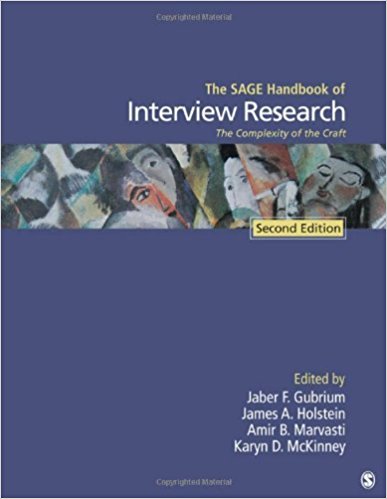(Ebook) The SAGE Handbook of Interview Research: The Complexity of the Craft by Jaber F. Gubrium, James A. Holstein, Amir B. Marvasti & Karyn D. McKinney ISBN 9781412981644, 9782011034823, 2011034825, 1412981646
The new edition of this landmark volume emphasizes the dynamic, interactional and reflexive dimensions of the research interview. Contributors highlight the myriad dimensions of complexity that are emerging as researchers increasingly frame the interview as a communicative opportunity as much as a data-gathering format. The book begins with the history and conceptual transformations of the interview, which is followed by chapters that discuss the main components of interview practice. Taken together, the contributions to the Handbook encourage readers simultaneously to learn the frameworks and technologies of interviewing and to reflect on the epistemological foundations of the interview craft.
As an approach to data collection, interviewing continues to expand, diversify and evolve with the reflexive revision of longstanding assumptions. Core principles of the traditional model of the structured interview—such as the distinctive roles of the interviewer and the respondent—have been reformulated in a number of ways and across a wide range of disciplines. The first edition of the Handbook of Interview Research successfully delivered the latest developments in the enterprise. This revised edition both builds on, and moves beyond, the first edition by:
updating the book in terms of recent developments, especially in qualitative interviewing,
shortening the volume so that it can be used as the main text for graduate seminars in qualitative research, as well as a general reference book,
featuring a how-to/instructional approach through empirically and theoretically informed discussions, and
enhancing the multidisciplinary flavor of the first edition.
The contributing authors offer a survey of the field with an emphasis on empirical diversity, procedural options, and theoretical choices. In this edition, three new sections have been added:
Logistics of Interviewing
Self and Other in Interviewing
Ethics of the Interviewing
While there is ample coverage of more traditional interviewing approaches and concerns (see, for example, chapters on survey interviews and quantitative analysis), the new edition emphasizes the dynamic, interactional, and reflexive dimensions of the research interview. This is in keeping with newly emerging interests in the field and the editors' expertise in presenting the research interview in this way. The volume highlights the myriad dimensions of complexity that are emerging as researchers increasingly frame the interview as a communicative opportunity as much as a data-gathering format. As with the original volume, the second edition begins with the history and conceptual transformations of the interview. The following chapters are organized around the main components of interview practice:
Part I: Interviewing in Context
Part II: Methods of Interviweing
Part III: Logistics of Interviewing
Part IV: Self and Other in the Interview
Part V: Analytic Strategies
Part VI: Ethics of the Interview
Part VII: Critical Reflections
As indicated by the subtitle of the new edition ("The Complexity of the Craft"), the research interview is being recast as a dazzlingly complex, multi-dimensional collection of assumptions and practices. Having shed the presumption that a particular model of interviewing is the "gold standard" of data collection, interviewing's persistent, ubiquitous presence in the social sciences is marked by amazing complexity. Taken together, the contributions to the Handbook encourage readers simultaneously to learn the frameworks and technologies of interviewing and to reflect on the epistemological foundations of the interview craft. We invite readers to view chapter contents both as points of emphasis in a common enterprise and as reflexive reconsiderations that have taken uncommonly imaginative direction.
*Free conversion of into popular formats such as PDF, DOCX, DOC, AZW, EPUB, and MOBI after payment.


